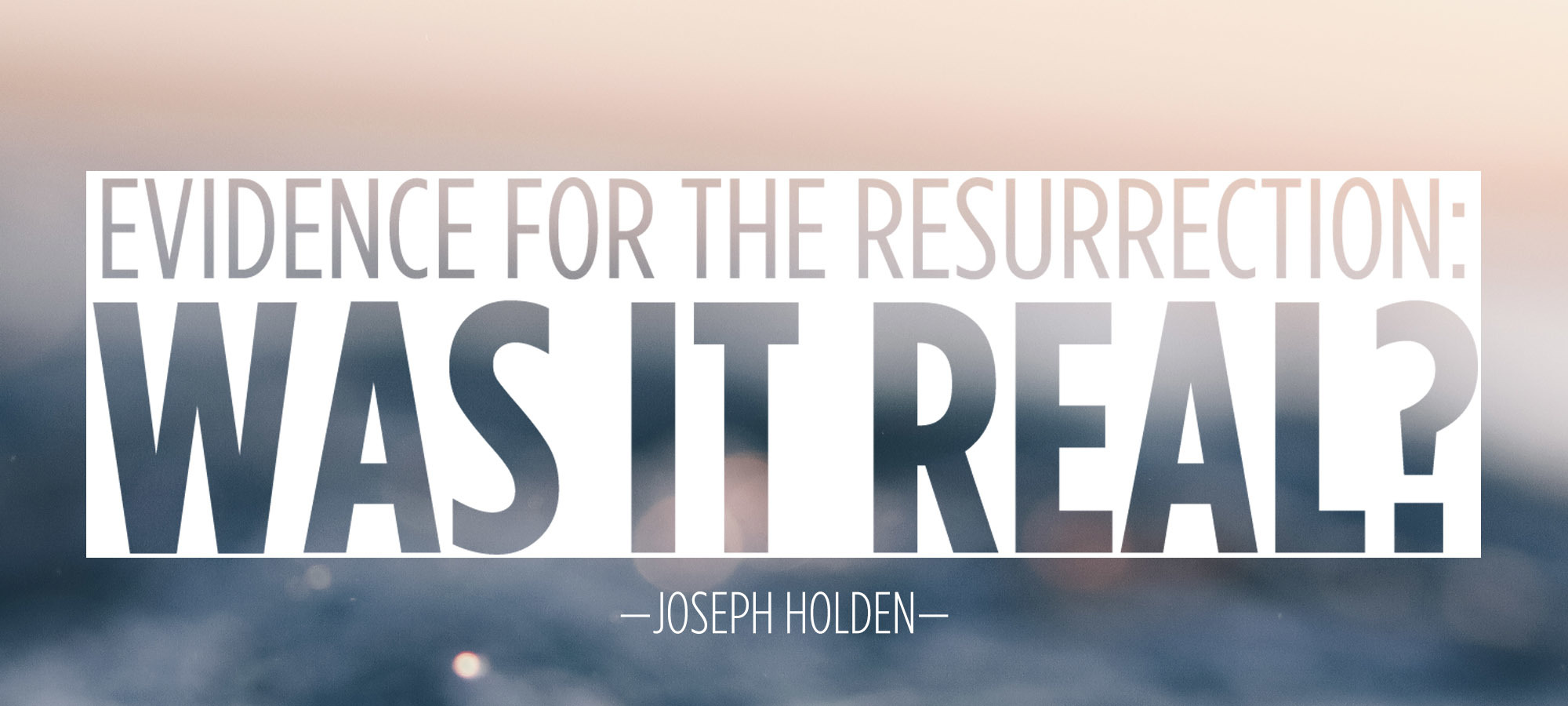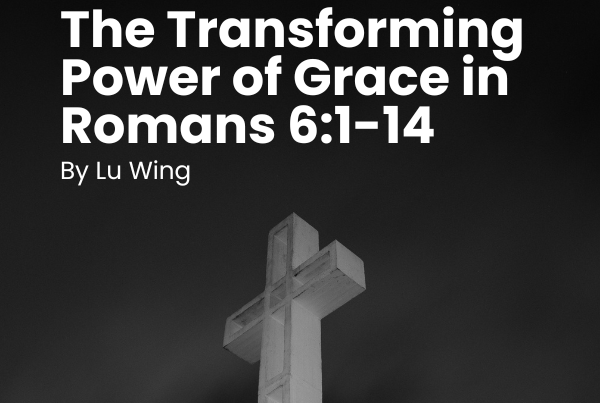
In an earlier post, we discussed Christ’s resurrection as an unique event that differs in kind from all other ancient near eastern myths of dying and rising fertility gods. In this section, we address two crucial questions: 1) What about the skeptics? 2) Was Christ’s resurrection a historical event? Our answers to these questions have a direct impact upon the believability of Christianity as a whole, since it is the heart of the gospel (1 Corinthians 15:1-3). It is a condition of salvation (Romans 10:9-10), and there is no hope without it (1 Corinthians 15:12-19).
What About the Skeptics?
Over the centuries, there have been several influential attempts to discredit the resurrection without success. Some believed (H.E.G. Paulus, Life of Jesus) Jesus never died on the cross but fainted and later revived in the cool tomb to live another day (i.e., known as the Swoon Theory). For Christians, the death of Christ is a prerequisite for a resurrection. However, this theory should be rejected, since it fails to recognize the physical condition of Christ and ignores the eyewitness accounts that confirm Christ’s death on the cross. First, Jesus was beaten and whipped, crowned with thorns, beard plucked from His face, did not have the strength to carry the cross to Golgotha.
His hands and feet were nailed to the cross, as crucifixion caused lungs to collapse; His side was pierced by a roman spear. Blood and water flowed from His side, which is evidence of death. Witnesses confirmed Christ’s death; His corpse was wrapped in 75 pounds of material, and the Romans pronounced Him dead and set an official seal on a guarded tomb.
What is more, medical experts confirmed Jesus’ death in the Journal of American Medical Association. They analyzed the data surrounding Christ’s crucifixion and concluded that “the assumption that Jesus did not die on the cross appear to be at odds with modern medical knowledge” (3/21/86, p. 1463). Second, the Swoon Theory does not account for the radical conversion of the disciples. Moreover, even the ancient Roman historian, Tacitus, wrote of Christ being put to death in Judea during the reign of Tiberius Caesar by the Roman Governor, Pontius Pilate. Further, the Jewish Talmud declares that Christ was put to death by being hung on a tree on the “eve of Passover.”
Others explain the resurrection by positing that the disciples stole the body of Jesus. This view is known as the “Conspiracy Theory” and is perhaps the most ancient of all, being devised by the chief priests and the elders to explain away the resurrection (Matthew 28:12-13). There are several reasons why it should be rejected. First, stealing the body and deceiving to cover the crime runs contrary to the character and teaching of Christ and the apostles. Second, it is contrary to the apostles’ willingness to die for their belief in the resurrection. People do not give their lives for what they know to be a lie. Third, even after persecution, there is no record of anyone recanting their message. Fourth, it doesn’t seem rational to believe such critics of the resurrection such as Saul, James (the Lord’s brother), and doubting Thomas could be fooled without strong evidence to overcome their ardent skepticism. Fifth, the body of Christ could have easily been produced to refute the resurrection claims, but apparently, it was not displayed. Sixth, there is no evidence to support the disciples stole the body. Seventh, the Romans had no motive to steal the body, since this would surely disrupt the peace they sought to maintain among the tense and volatile population. Eighth, the Jews had no motive to steal the body, since this would run contrary to there desire to keep Jesus in the tomb to avoid resurrection claims. Finally, this theory does not explain the physical appearances of Christ or the eyewitness claims of the resurrection.
Any theory of the resurrection must account for these 12 commonly accepted facts (among all scholars) surrounding the event:
1) Jesus died by crucifixion.
2) Jesus was buried.
3) Disciples doubted and despaired.
4) The tomb, in which Jesus was buried, was discovered empty a few days later.
5) Disciples had experiences that they believed to be actual appearances of the risen Christ. 6) Disciples were transformed and willing to die for the truth.
7) The gospel message was the center of preaching in the early church.
8) The gospel was proclaimed in Jerusalem where Jesus died.
9) The church was established by these disciples.
10) The day of worship was Sunday, the same day Jesus was reported risen.
11) Skeptical James (Jesus’ brother) was converted when he believed he saw the risen Christ.
12) Paul, a persecutor of the church, was converted when he believed he saw the risen Christ.
For too long, many have attempted to work outside of these known facts, like the swoon and conspiracy theories, to their own peril.
Was the Resurrection a Real Historical Event?
Contrary to these skeptical claims, there are several reasons to believe the resurrection of Christ is a historical event.
First, the New Testament stands the most reliable source of information on the resurrection from any book in the ancient world. Though the originals have been lost to time, the NT contains the most manuscript attestation to the history it records (28,000+ copies in various languages, over 5,800 of these are in the Greek language), the earliest records of the resurrection (25-150 year gap from the time they were written), and the most accurately copied manuscripts of any book from the ancient world (99.9% copy accuracy). The early dates and sheer manuscript quantity prohibits myth, distortion and embellishment to filter into the history recorded in the NT text.
The basic books of the NT were written by AD 65 (with exception of the Gospel of John and Revelation), meaning there was simply no time for myth to replace the basic facts of the resurrection.
Even the Greek historian, Herodotus, said that it takes at least 80 years for a myth to develop! Near eastern scholar, P.J. Wiseman, claims that one generation is not enough time for a myth to develop. The vast majority of the NT was written within 25-30 years from the death and resurrection of Christ! The witnesses would still be alive to correct any misconceptions to the basic facts surrounding the resurrection.
Second, Jesus appeared to eyewitnesses on at least 12 different occasions, with Paul declaring some 500 witnesses saw the risen Christ (1 Corinthians 15:1-8). These appearances resulted in witnesses seeing, hearing and/or touching his physical body. The commonly understood and well-practiced legal approach to establishing fact draws upon the testimony of numerous witnesses of any given event. Even the Scripture says, “On the evidence of two or three witnesses a matter shall be confirmed” (Deuteronomy 19:15). The NT has nine different authors (if someone other than Paul wrote Hebrews), who wrote 27 books that either explicitly or implicitly affirm the resurrection.
Third, the best explanation for the empty tomb that was guarded and sealed is that Christ rose! Fourth, the apostles died for what they believed to be the resurrected Christ. Fifth, the widespread, sudden and dramatic change in the lives and religious practice of devoted Jews who kept the Mosaic Law for centuries. In other words, how do fervent religious Jews suddenly shift from Saturday to Sunday worship and from abstaining from unclean foods to eating pork with gentiles? What possibly could transform a group of disappointed and afraid disciples who were devastated at the crucifixion, in hiding for fear of death, contemplating a rapid escape and/or abandonment of their calling and return to their former activities, into the most prolific missionary movement of all time? The resurrection would have the power to do just that and provide the crowning proof that Jesus was indeed the Son of God (Romans 1:4).
Sixth, well-known skeptics and attorneys have found the eyewitness testimonies of Christ convincing and reliable. These include the late Harvard University law professor and author of A Treatise on the Law of Evidences (1853), Simon Greenleaf, who penned The Testimony of the Evangelists, Thomas Sherlock (The Trial of the Witnesses of the Resurrection), Frank Morrison (Who Moved the Stone?), John W. Montgomery (Christianity and History), Irwin Linton (A Lawyer Examines the Bible), investigative journalist and skeptic, Lee Strobel (The Case For Christ) and David Limbaugh (Jesus on Trial: A Lawyer Affirms the Truth of the Gospel). In addition, reputable modern historians of ancient history such as A.N. Sherwin-White (Roman Society and Roman Law in the NT) and Colin J. Hemer (The Book of Acts in the Setting of Hellenistic History) have affirmed the historical reliability of the NT.
Finally, the presence of counter-productive features, within the gospel accounts of the death and resurrection of Christ, further demonstrates its reliable history. That is to say, the mere presence of statements that do not cast Christ or His followers in a positive light suggests truthfulness. For example, the gospels reveals Christ’s humiliating trial, shameful death at the hands of His persecutors. Christ appeared powerless to effect change, while the disciples hid in fear and appeared cowardice, with lack of strength to carry His own cross. Those closest to Jesus betrayed and denied Him; the disciples were slow in understanding, and they did not believe. After rising from the dead, Jesus appeared first to women who had little legal standing and credibility in the eyes of their culture and law. According to historians, these crucial features reveal that the writers of the NT were more interested in reporting accurate history than deceiving their readers by painting a flawless portrait Christ and His followers.
We have seen that we have good reason to believe the resurrection of Christ is a historical event.
Attempts to explain the resurrection away fails to account for all the data and leaves irreconcilable flaws in their argument. We will discuss further of the nature and significance of Christ’s resurrected body. Was it a spiritual or physical body? Was it the same body that was in the tomb? What kinds of changes occurred to His resurrected body? Does Christ still have His physical body today?






